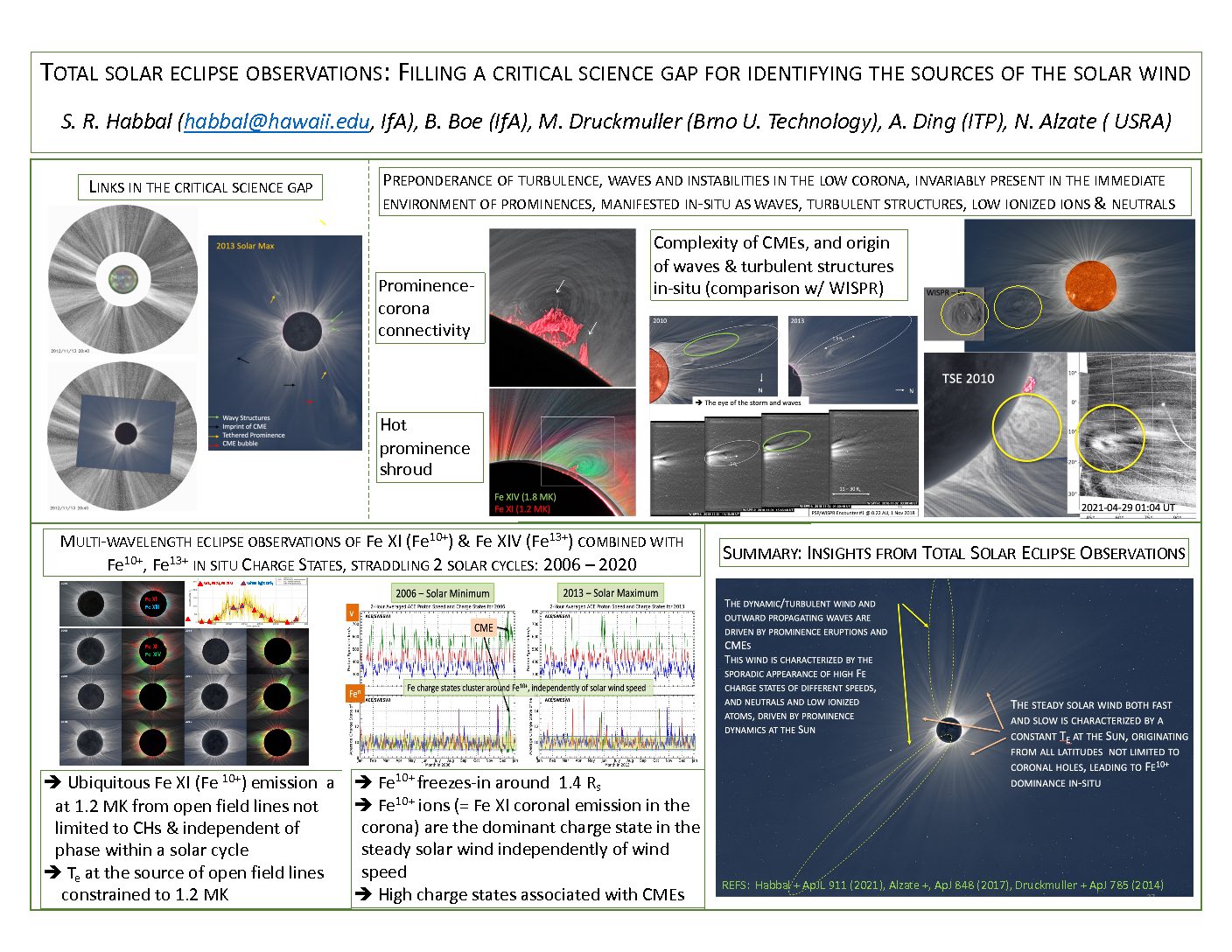Authors: Shadia Habbal (Institute for Astronomy, University of Hawaii), B. Boe (IfA, UH), M. Druckmuller (Brno University of Technology), A. Ding (Technische Universität, Berlin), N. Alzate (Universities Space Research Association, USRA)
The coronal space spanning several solar radii above the solar surface is the source of many dynamical coronal processes leading to the onset of plasma instabilities and the eruption of prominences. It is also the region where the plasma parameters, characteristic of the in-situ measured solar wind, acquire their properties. This critical coronal space, which holds the clues to coronal heating processes, can only be probed at present in a spatially uninterrupted manner with total solar eclipse imaging and spectroscopic observations. This poster will focus on the insights gleaned from multi-wavelength eclipse observations of Fe coronal emission lines and electron scattering, acquired over the past 25 years that straddle more than two solar cycles. These observations are coupled with the corresponding in-situ charge state measurements to infer their origin at the Sun. Furthermore, the eclipse observations frequently capture the instantaneous status of dynamic events at the Sun. The high-resolution white light images also capture a diverse range of magnetic morphologies which are shown to persist in the solar wind, as evidenced by white light images from WISPR on PSP. These multi-wavelength eclipse observations underscore the critical need for covering this coronal space with comparable quality measurements in a temporally continuous manner with ground- and space-based coronagraphs.


